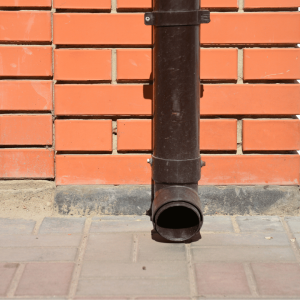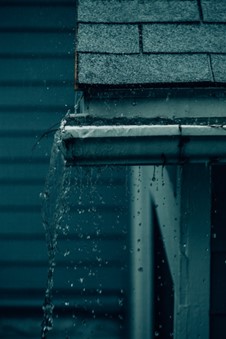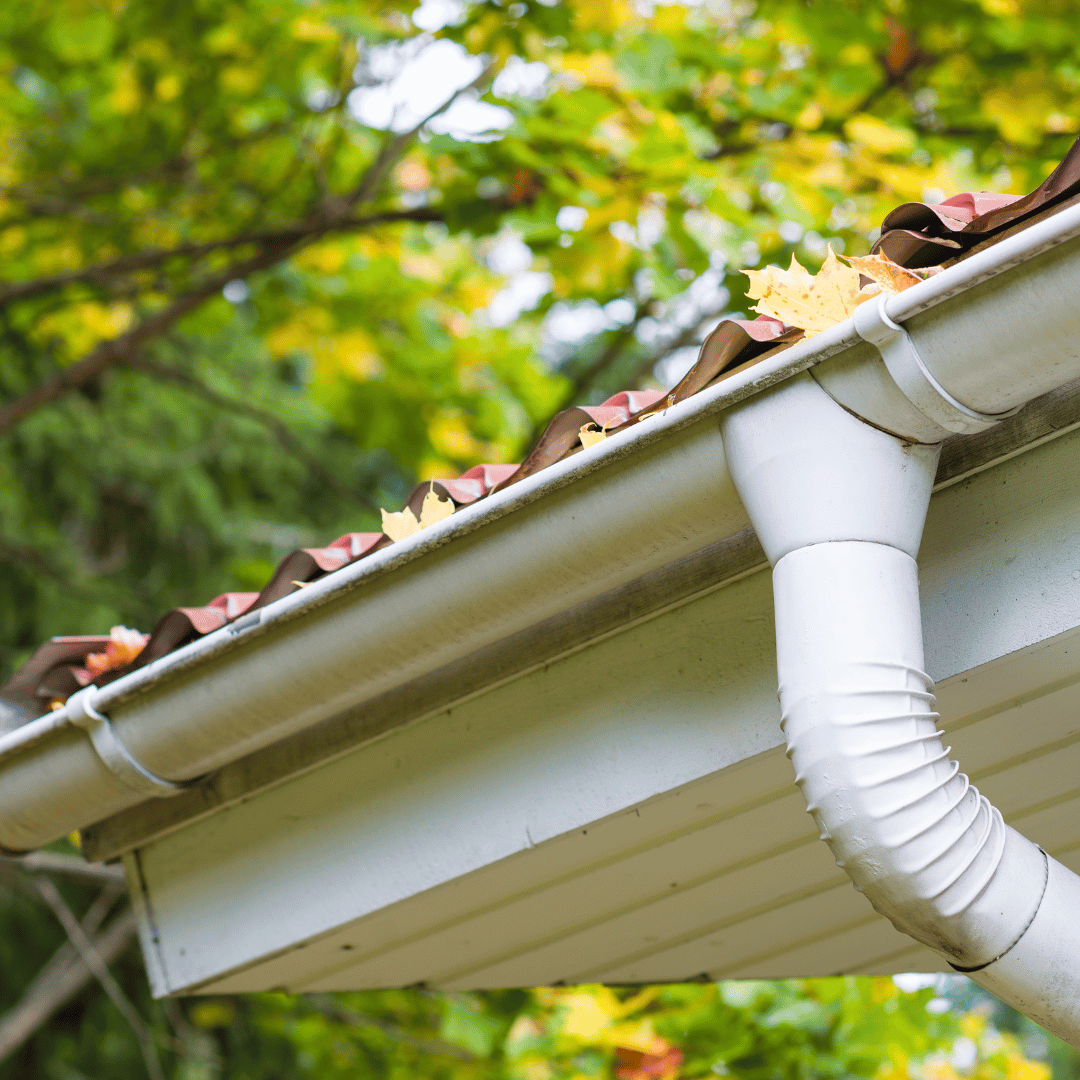
Essential Guide to Downspout Drain Cleaning Near Me
Maintaining your home’s drainage system is crucial for preventing water damage and ensuring the longevity of your property. One key component often overlooked is the downspout drain. These essential structures direct rainwater away from your roof and foundation, protecting your home from moisture-related issues. If you’re searching for downspout drain cleaning near me, it’s vital to understand how to keep these systems clear and functioning effectively.
In this article, we will explore the ins and outs of downspout drain cleaning, answer common questions, and highlight the importance of regular maintenance. Whether you’re a new homeowner or looking to enhance your preventative home maintenance routine, this guide will provide valuable insights to help you protect your investment and avoid costly repairs down the line.
What Is a Downspout Drain Called?
A downspout drain is an essential part of your home’s rainwater management system. It refers to the vertical pipe that channels rainwater collected from the roof gutters down to the ground or a designated drainage area. While commonly known as a downspout, this component may also be referred to by other names, such as:
- Drainage Downspout: Emphasizing its role in drainage.
- Rainwater Downspout: Highlighting its purpose in managing rainwater.
- Gutter Downspout: Indicating its connection to the gutter system.
Understanding the terminology is essential for homeowners, especially when seeking local services for downspout drain cleaning near me. Properly functioning downspouts are critical for preventing water accumulation around your home’s foundation, which can lead to significant damage if left unaddressed.
By knowing what a downspout drain is called, homeowners can communicate effectively with maintenance professionals, ensuring their drainage systems are in good condition.
How Do You Clean a Clogged Downspout Drain?
Cleaning a clogged downspout drain is essential to maintain proper water flow and prevent potential damage to your home. Here’s a step-by-step guide to help you effectively clean a clogged downspout drain:
Step 1: Safety First
Before you start, prioritize your safety. Wear gloves to protect your hands from debris and potential sharp objects. Additionally, if you’re using a ladder to access gutters or downspouts, ensure it is stable and positioned on a flat surface.
Step 2: Remove Debris
Begin by clearing any debris from the top of the downspout and the gutters. This may include leaves, twigs, dirt, and other materials that could obstruct water flow. Use a scoop or your hands (with gloves) to remove larger debris and a hose to wash away finer particles.
Step 3: Use a Plumbing Snake
If water doesn’t flow freely through the downspout, there may be a clog further down the pipe. In this case, use a plumbing snake or auger to reach the obstruction. Insert the snake into the downspout and twist it to break up the clog. Be careful not to damage the downspout while doing this.
Step 4: Flush with Water
After breaking up the clog, it’s time to flush the downspout. Use a garden hose with a spray nozzle to send water through the downspout. This will help remove any remaining debris and ensure proper flow. If the water drains freely, you’ve successfully cleared the clog.
Step 5: Check for Proper Flow
Once you’ve completed the cleaning process, double-check that water flows smoothly through the downspout and into the designated drainage area. If the water still does not drain correctly, you may need to inspect further or consult a professional.
Importance of Regular Gutter Cleaning
Regular gutter cleaning is crucial in preventing clogs in downspouts. By keeping your gutters clear of debris, you can significantly reduce the risk of blockages and ensure that rainwater is efficiently directed away from your home. Consider scheduling regular maintenance as part of your preventative home maintenance routine to avoid costly repairs in the future.
How Deep Are Downspout Drains Buried?
Understanding how deep downspout drains are buried is important for proper maintenance and drainage effectiveness. Typically, downspout drains are buried at least 18 to 24 inches deep, but this depth can vary based on several factors:
Local Regulations
Different municipalities may have specific guidelines regarding the depth of drainage systems. It’s essential to check local regulations to ensure compliance, as improper installation could lead to fines or mandated adjustments.
Soil Conditions
The type of soil in your area can influence how deep downspouts need to be buried. For instance:
- Clay soils may require deeper burial to prevent water from pooling.
- Sandy soils often allow for shallower installation, as they drain more efficiently.
Freezing Concerns
In regions with colder climates, downspout drains should be buried deeper to avoid freezing. When water freezes in the pipes, it can cause blockages and significant damage to the drainage system. Burying the drains below the frost line (usually around 36 inches in many areas) can help mitigate this risk.
Drainage Efficiency
Proper depth is crucial for ensuring that water flows effectively away from the foundation. If downspout drains are too shallow, they may be more susceptible to blockages from debris, soil settling, or other environmental factors.
The Importance of Maintenance
Regardless of depth, it’s important to periodically inspect and maintain downspout drains to ensure they function properly. Regular maintenance, including gutter cleaning and checking for clogs, can prevent issues associated with buried downspouts, protecting your home from water damage.
By understanding how deep your downspout drains are buried, you can better plan for maintenance and ensure effective drainage, contributing to your home’s overall exterior home maintenance strategy.
Are Buried Downspouts Good or Bad?
Buried downspouts can offer both advantages and disadvantages for homeowners. Understanding these pros and cons will help you make informed decisions about your drainage system and whether buried downspouts are the right choice for your property.
Advantages of Buried Downspouts
- Aesthetic Appeal:
- One of the primary benefits of buried downspouts is that they enhance the overall appearance of your home. By hiding the downspouts underground, you create a cleaner, more visually appealing landscape.
- Efficient Drainage:
- Buried downspouts can effectively direct rainwater away from your foundation, reducing the risk of water pooling around your home. This is especially important for preventing water damage and erosion.
- Protection from Damage:
- When downspouts are buried, they are less likely to be damaged by lawn equipment, extreme weather, or pests. This can result in a longer lifespan for your drainage system.
- Minimized Erosion:
- Properly installed buried downspouts can help minimize soil erosion in your yard by controlling the flow of water away from your property.
Disadvantages of Buried Downspouts
- Potential for Clogging:
- One significant downside is that buried downspouts are more prone to clogs due to the accumulation of debris and sediment over time. This can lead to backups and water pooling if not regularly maintained.
- Maintenance Difficulty:
- Accessing and cleaning buried downspouts can be more challenging than dealing with above-ground systems. Homeowners may need to excavate the area or use specialized tools to clear blockages.
- Cost of Installation:
- Installing buried downspouts can be more expensive than traditional above-ground systems. The additional labor and materials involved can increase initial costs.
- Flooding Risk:
- If buried downspouts are not installed correctly or become blocked, they can lead to flooding around your foundation, resulting in significant damage.
Buried downspouts can be an effective drainage solution, but they come with their own set of challenges. To maximize their benefits and minimize potential issues, it’s essential to incorporate regular maintenance as part of your preventative home maintenance plan. This includes routine inspections, gutter cleaning, and ensuring the drainage system remains clear of obstructions. By doing so, you can enjoy the aesthetic advantages of buried downspouts while protecting your home from water-related problems.
How Do You Clear a Buried Downspout?
Clearing a buried downspout can be a bit more involved than cleaning above-ground drains, but it’s essential for maintaining proper water flow and protecting your home from water damage. Here’s a step-by-step guide on how to effectively clear a buried downspout:
Step 1: Locate the Drainage Outlet
Before you begin, it’s important to identify where the buried downspout drains to. This may be a drainage pit, dry well, or another drainage area in your yard. Understanding the layout will help you plan your approach.
Step 2: Clear the Area
Start by clearing any debris, plants, or obstacles around the area where the downspout is buried. This will give you enough room to work and help you access the drain more easily.
Step 3: Dig Carefully
Using a shovel, carefully dig around the buried downspout to expose the pipe. Be cautious not to damage the pipe itself during this process. Aim to uncover enough of the downspout so you can see the connections and the outlet.
Step 4: Inspect for Blockages
Once you’ve exposed the downspout, check for visible blockages. Look for accumulated debris, sediment, or any other materials that may be obstructing the flow.
Step 5: Use a Plumbing Snake or Auger
If you find that the downspout is clogged deeper within the pipe, use a plumbing snake or auger to clear the blockage. Insert the snake into the downspout and twist it to break up any clogs. This tool can help reach obstructions that are not easily accessible by hand.
Step 6: Flush with Water
After you’ve cleared the blockage, use a garden hose to flush the downspout. This will help remove any remaining debris and ensure that water flows freely through the system. If the water drains smoothly, you’ve successfully cleared the downspout.
Step 7: Refill the Area
Once the downspout is cleared and functioning properly, carefully refill the area around it with soil. Make sure to compact the soil as you go to prevent settling. If any grass or plants were disturbed, consider replanting them to restore the landscape.
Importance of Regular Maintenance
Regular maintenance is key to preventing future clogs in buried downspouts. Schedule routine inspections as part of your exterior home maintenance plan, and remember to keep your gutters clean to reduce debris that can cause blockages.
By following these steps, you can keep your buried downspouts clear and functioning efficiently, protecting your home from potential water damage.
Do Buried Downspouts Get Clogged?
Yes, buried downspouts can and often do get clogged. While they provide an effective means of directing rainwater away from your home, several factors can contribute to blockages. Understanding these causes can help you take proactive measures to maintain your drainage system.
Common Causes of Clogs in Buried Downspouts
- Debris Accumulation:
- Leaves, twigs, dirt, and other debris can accumulate in downspouts over time. If not regularly cleared, this buildup can obstruct water flow, leading to clogs.
- Sediment Buildup:
- Soil and sediment can wash into the downspout, especially during heavy rain. This sediment can settle and create blockages that restrict water flow.
- Tree Roots:
- In some cases, tree roots may grow into or around buried downspouts, creating obstructions. This is more common in areas with mature trees that have extensive root systems.
- Improper Installation:
- If a downspout is installed at an incorrect angle or depth, it may not drain effectively, leading to standing water and increased chances of clogging.
- Freezing Conditions:
- In colder climates, water inside the downspout can freeze, leading to blockages. When temperatures rise, the ice may thaw but can leave behind debris that contributes to future clogs.
Preventing Clogs in Buried Downspouts
To minimize the risk of clogs in your buried downspouts, consider implementing the following preventive measures:
- Regular Gutter Cleaning: Keeping your gutters clear of debris will significantly reduce the amount of material that can enter downspouts, helping to prevent clogs.
- Routine Inspections: Periodically inspect your buried downspouts to ensure they are functioning properly. Look for signs of pooling water or slow drainage.
- Install Leaf Guards: Consider adding leaf guards to your gutters to reduce the amount of debris that can wash into the downspouts.
- Adjust Downspout Angles: Ensure that your downspouts are installed at the correct angles to facilitate proper drainage and prevent standing water.
- Consider Professional Maintenance: Hiring a professional for regular maintenance and inspections can help identify and address potential issues before they become major problems.
While buried downspouts are an effective solution for managing rainwater, they can become clogged if not properly maintained. By understanding the common causes of clogs and implementing preventive measures, you can protect your home from water-related damage and ensure that your drainage system remains efficient. Regular attention to your downspouts and gutters is a critical aspect of preventative home maintenance that pays off in the long run.
How Do You Clean a Clogged Downspout Drain?
Cleaning a clogged downspout drain is essential to maintaining a functional drainage system. Here’s a step-by-step guide to help you effectively clean your clogged downspout drain and ensure proper water flow:
Step 1: Gather Your Tools
Before you start, gather the necessary tools for the job. You’ll need:
- A garden hose with a spray nozzle
- A plumbing snake or auger
- A bucket or container for debris
- Gloves and safety goggles
- A trowel or small shovel (if needed)
Step 2: Remove the Downspout
If the clog is severe, you may need to detach the downspout from the gutter. To do this:
- Use a trowel to remove any debris around the downspout.
- Unscrew or unclip the downspout from the gutter.
- Be careful not to damage the downspout or the gutter during removal.
Step 3: Inspect for Blockages
Once the downspout is removed, inspect the interior for any visible clogs. Look for leaves, dirt, or other debris that may be obstructing the flow.
Step 4: Use a Plumbing Snake
If you see a blockage, insert a plumbing snake into the downspout and twist it to break up the clog. Push the snake through the pipe until you feel resistance, then work it back and forth to dislodge any debris.
Step 5: Flush with Water
After using the plumbing snake, it’s time to flush out any remaining debris:
- Reattach the downspout or position the hose directly into the opening of the downspout.
- Turn on the garden hose and let the water run through the downspout to wash away any remaining debris.
Step 6: Reinstall the Downspout
Once the downspout is clear and flowing freely, reattach it to the gutter:
- Make sure it’s securely fastened and aligned properly to ensure optimal drainage.
Step 7: Test the Drainage
To ensure everything is functioning correctly, conduct a simple test:
- Run water through the gutter to see if it flows freely through the downspout and drains away from your foundation.
Step 8: Regular Maintenance
To prevent future clogs, include downspout cleaning as part of your regular exterior home maintenance routine. Consider cleaning your gutters and downspouts at least twice a year, especially during the fall and spring seasons.
Cleaning a clogged downspout drain doesn’t have to be a daunting task. By following these steps and performing regular maintenance, you can ensure your drainage system operates efficiently, protecting your home from water damage and keeping your landscape healthy. Remember, keeping your downspouts clear is an important part of your overall preventative home maintenance strategy.
In conclusion, understanding the importance of downspout drain cleaning and maintenance is crucial for protecting your home from water damage and ensuring efficient drainage. Buried downspouts can enhance the aesthetic appeal of your property and effectively direct rainwater away from your foundation. However, they also come with challenges, including the potential for clogs and the need for regular maintenance.
Key Takeaways
- Importance of Cleaning: Regular cleaning of both gutters and downspouts is vital to prevent clogs and ensure proper water flow. Neglecting this task can lead to significant water damage and costly repairs.
- Maintenance Strategies: Incorporate routine inspections and cleaning into your preventative home maintenance plan. This includes understanding how to clear blockages and identifying potential issues before they become major problems.
- Professional Help: If you encounter persistent clogs or are unsure about handling maintenance yourself, consider hiring a professional service. They can provide expert assistance in maintaining your drainage system.
- Related Services: Remember that downspout drain cleaning is just one aspect of exterior home maintenance. Other services like gutter cleaning, pressure washing, and window washing are equally important to maintain the integrity and appearance of your home.
By prioritizing downspout drain cleaning and understanding the steps involved, you can protect your home from water-related issues and enhance its overall value. If you’re in need of professional assistance or regular maintenance, HomeSmiles is here to help with our extensive range of preventative home maintenance services. Let us take care of all those “honey-do” items on your list, ensuring your home remains in top condition.
- Protecting Your Property: Why the Right Cleaning Method Makes All the Difference
- The #1 Thing That’s Dulling Your Curb Appeal (And How to Fix It)
- How Maintenance Bundles Provide Peace of Mind for Busy Small Business Owners and Facility Managers
- Essential vs. Complete Home Packages: Choosing the Right Preventive Care for Your Property
- How a Simplified Service Model Benefits Both Homeowners and Franchisees Alike


